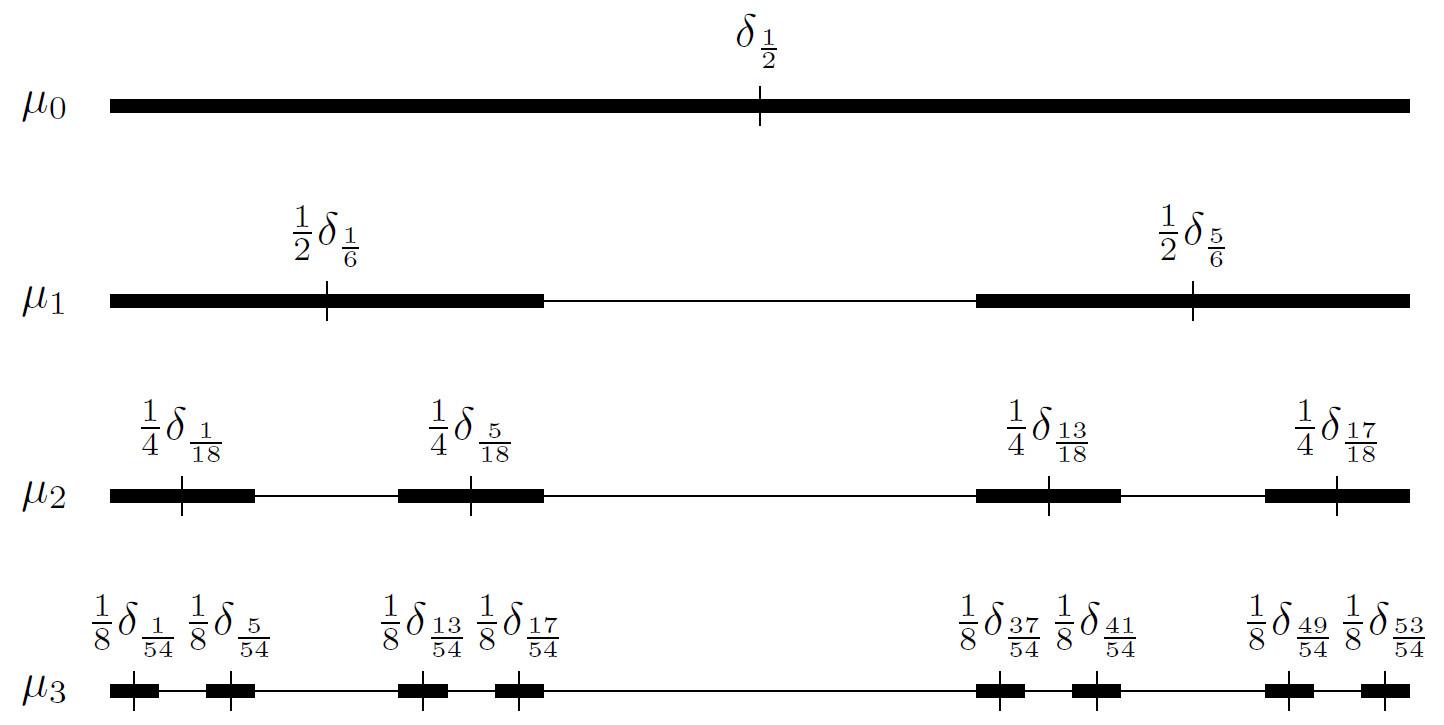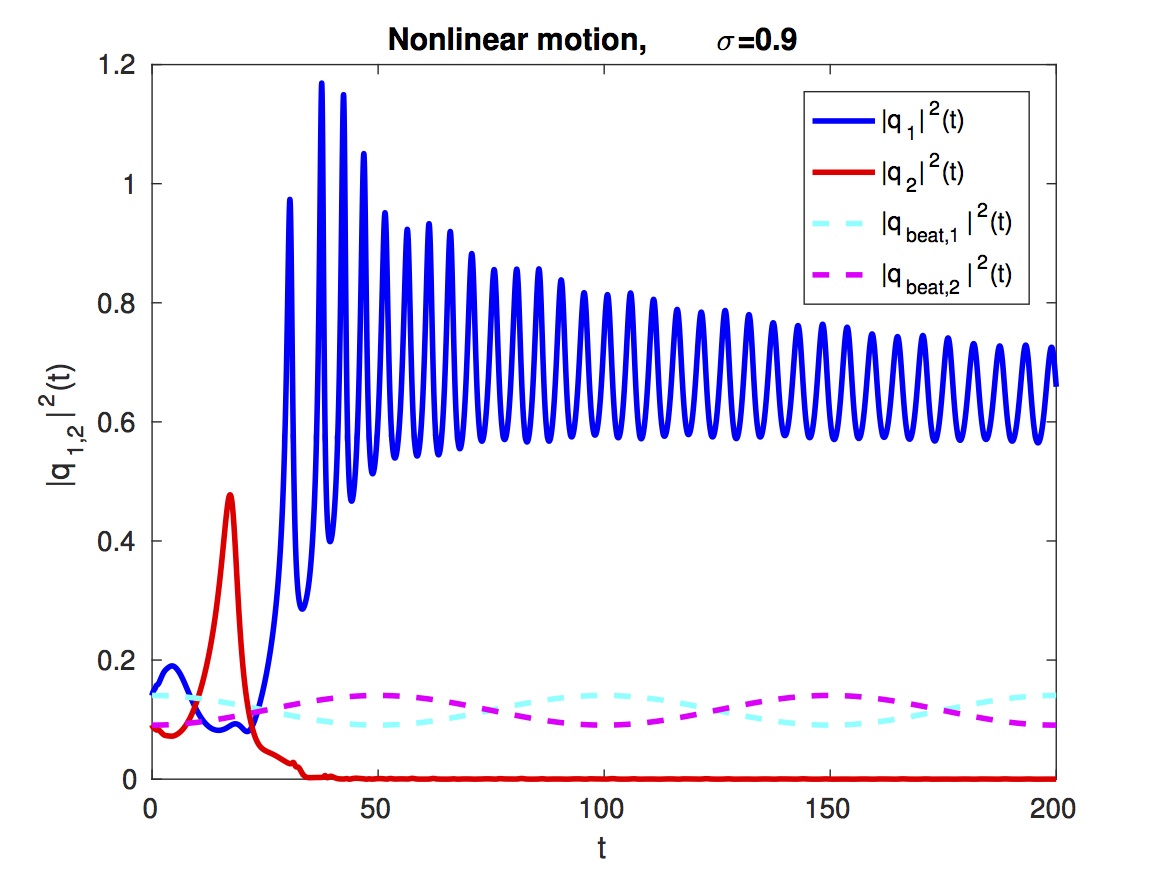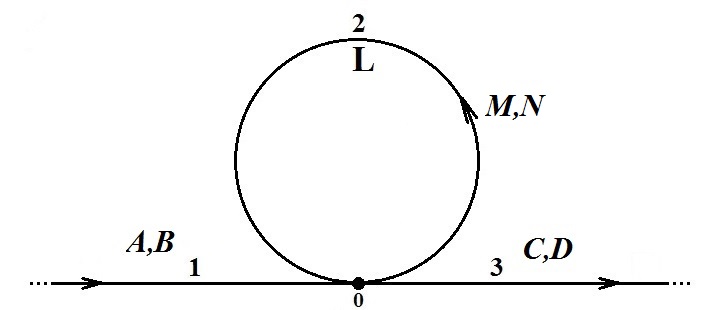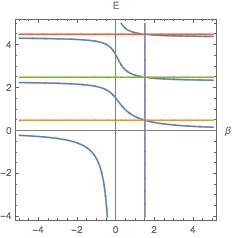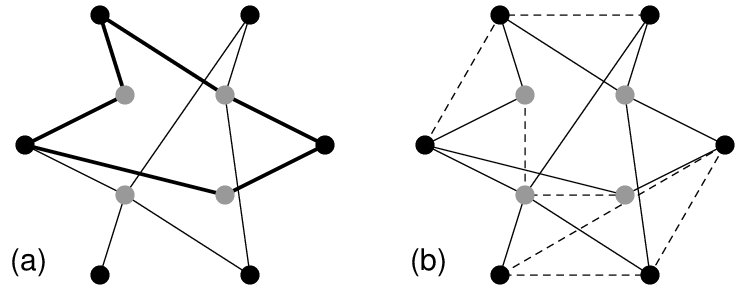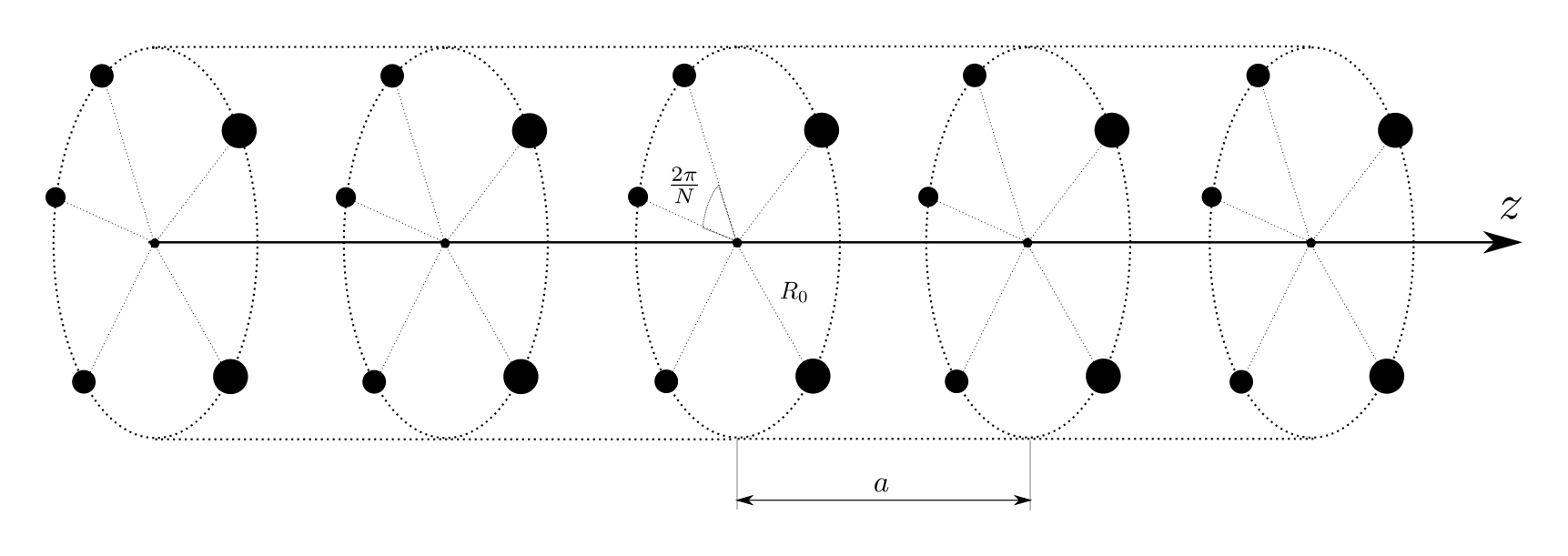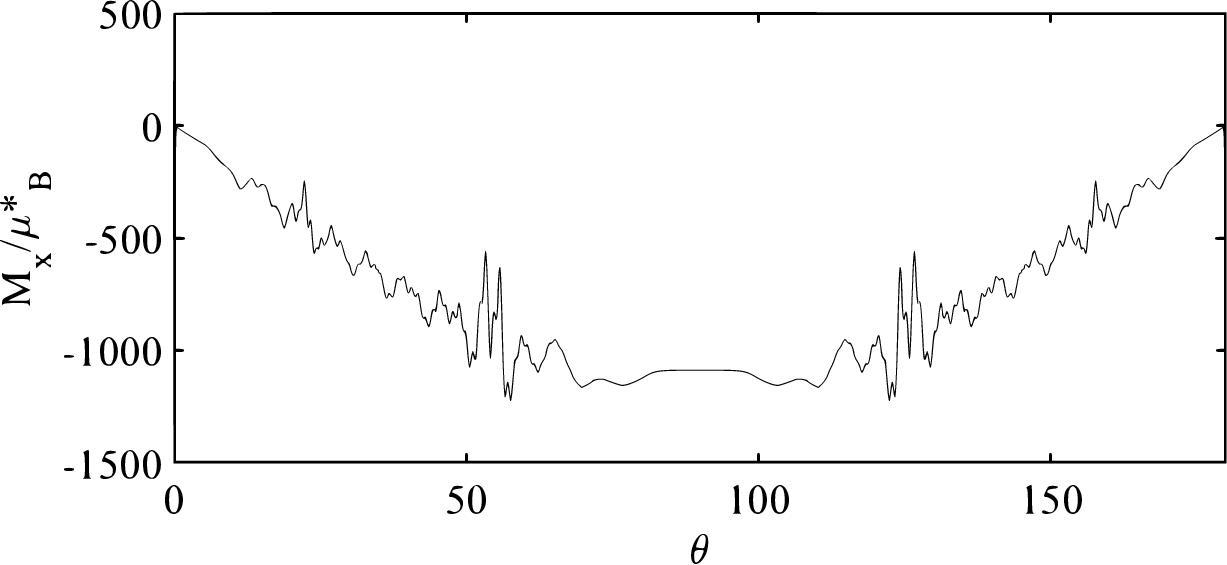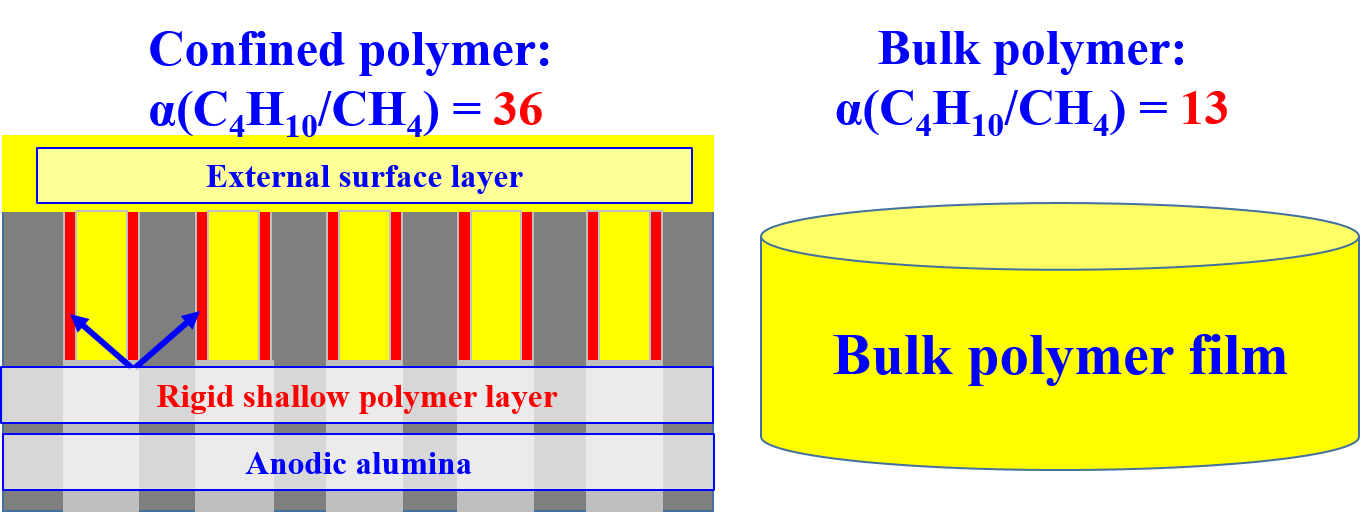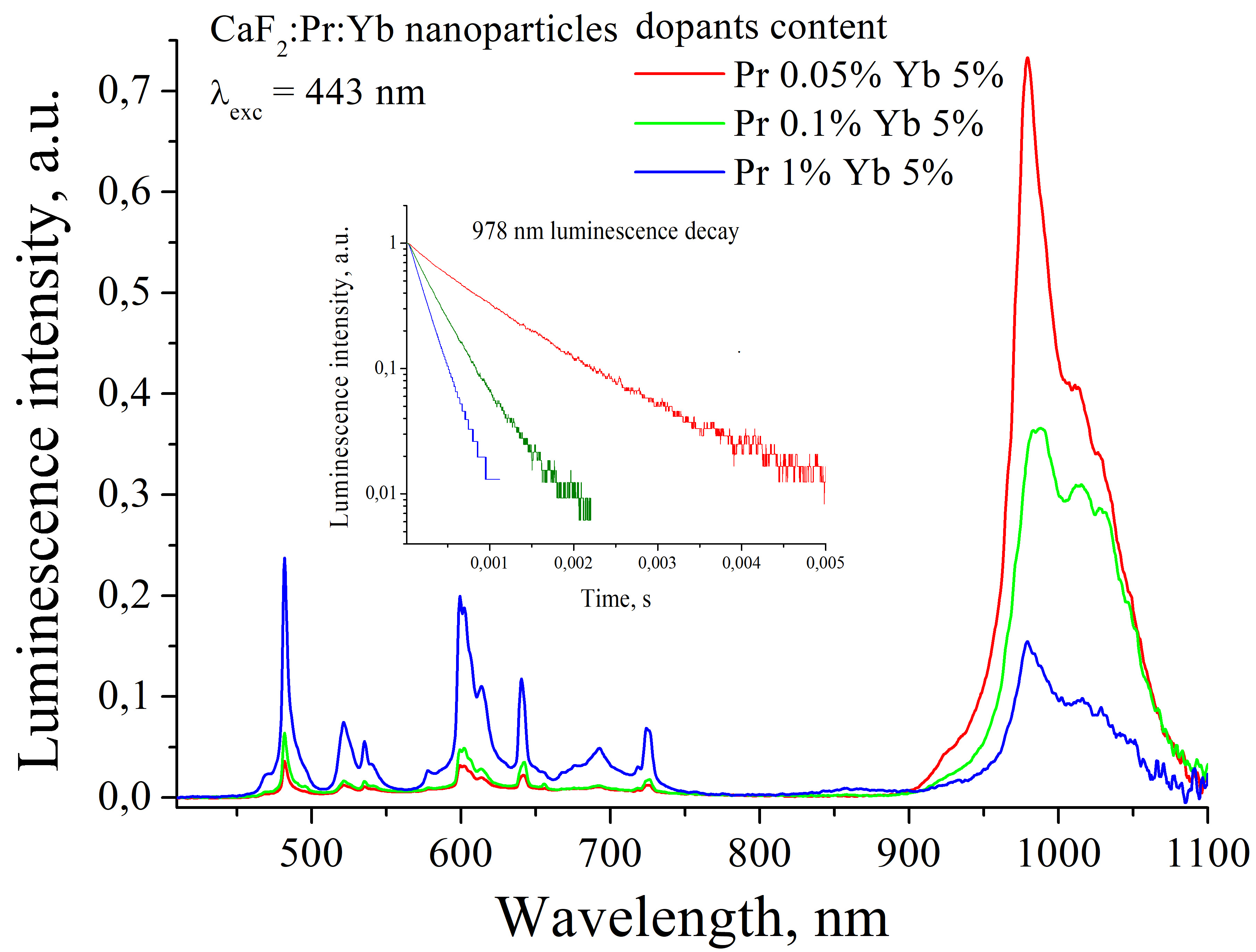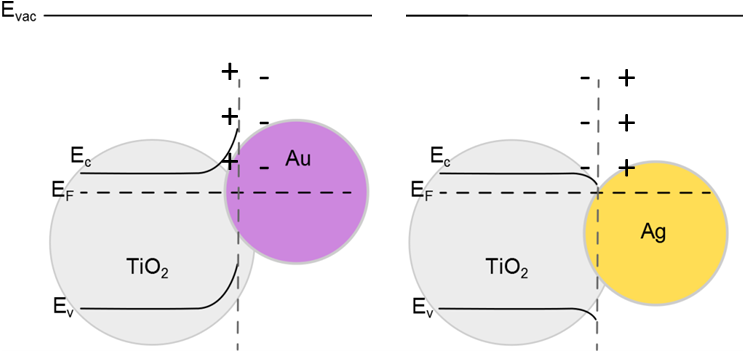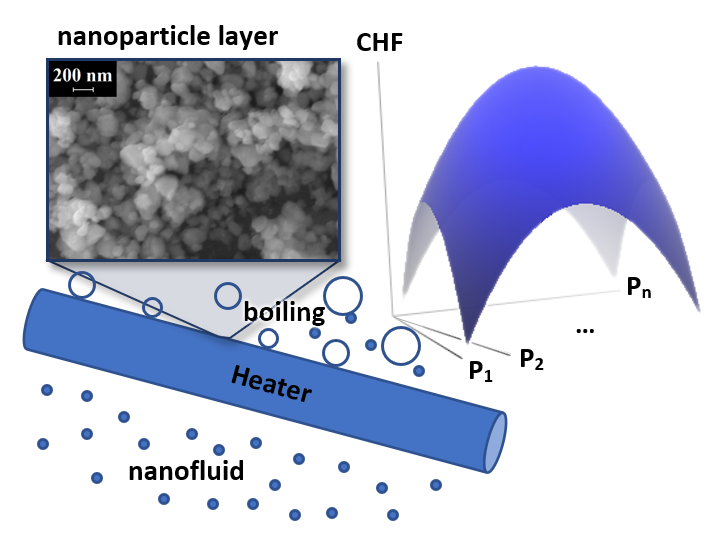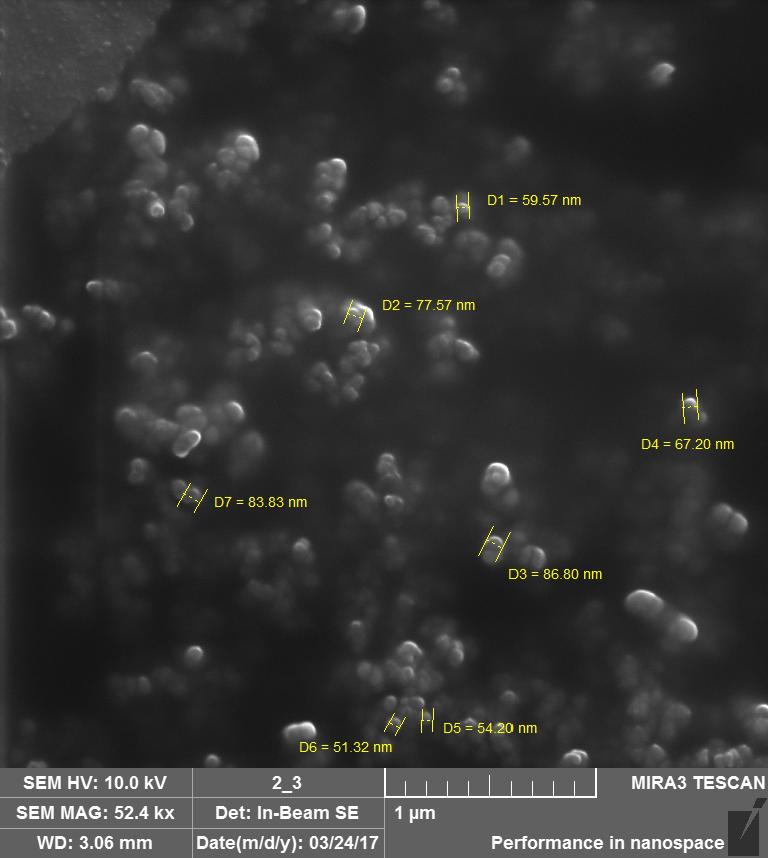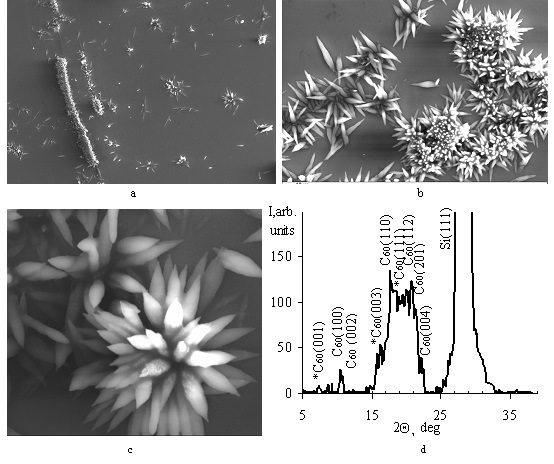MATHEMATICS
It is known that convergence of l. s. b. closed symmetric sesquilinear forms implies norm resolvent convergence of the associated self-adjoint operators and thus, in turn, convergence of discrete spectra. In this paper, in both cases, sharp estimates for the rate of convergence are derived. An algorithm for the numerical computation of eigenvalues of generalized Schrodinger operators in¨ L2(R) is presented and illustrated by explicit examples; the mentioned general results on the rate of convergence are applied in order to obtain error estimates for these computations. An extension of the results to Schrodinger operators on metric graphs is sketched.
We review some results about the suppression of quantum beating in a one dimensional nonlinear double well potential. We implement a single particle double well potential model, making use of nonlinear point interactions. We show that there is complete suppression of the typical beating phenomenon characterizing the linear quantum case.
We propose a model describing electronic transport through a boson cavity. We use the Jaynes–Cummings model dealing with a two-level quantum dot coupled to a quantized electro-magnetic field and two semi-infinite wires. The mathematical background of our model is given by the theory of self-adjoint extensions of symmetric operators. Using the boundary triplets approach, the gamma-field and the Weyl function were calculated. In addition, we obtained the scattering matrix for the model system.
In this brief presentation, some striking differences between level crossings of eigenvalues in one dimension (harmonic or conic oscillator with a central nonlocal δ0-interaction) or three dimensions (isotropic harmonic oscillator with a three-dimensional delta located at the origin) and those occurring in the two-dimensional analogue of these models will be highlighted.
We present an introduction to the nonlinear Schrodinger equation (NLSE) with concentrated nonlinearities in¨ R2. Precisely, taking a cue from the linear problem, we sketch the main challenges and the typical difficulties that arise in the two-dimensional case, and mention some recent results obtained by the authors on local and global well-posedness.
Simple formulation and a straightforward proof of the Lieb–Mattis theorem (LMT) do not indicate how powerful a tool it is. For more than fifty years, this theorem has been mainly discussed in its ‘strong’ form and applied mainly to many type of infinite spin lattices. It can be easily proved that in such cases, geometrically frustrated systems have to be excluded. However, it has been recently shown that the so-called ‘weak’ or general form of the LMT can be exploited considering some small, geometrically frustrated quantum spin systems. Moreover, many systems, which do not satisfy assumptions of the LMT, show identical features, including the level order characteristic for bipartite spin systems. It yields a question about possible generalizations or modifications of this theorem to involve a larger class of problems. To begin, algebraic aspects have to be understood with the invaluable role of the Perron-Frobenius theorem. The latter theorem is investigated, discussed, modified etc. in immense number of works. Many of them are important in physical applications and ways of reasoning they present can be exploited in different approaches to the LMT.
In this work, the problem of electron transport in cylindrical nanowires is considered. A model of nanowire is proposed with the irregularities/scatterers concentrated mainly in the vicinity of the surface. It is treated as a waveguide with some scattering indicatrix introduced to describe specular and nonspecular scattering. Employing the kinetic approach, Kolmogorov equation is used to calculate subsequently aproximate nonequlibrium distribution function and derive explicit formula for the resistivity of the system.
A stationary Schrodinger operator on¨ R2 with a potential V having N nondegenerate minima which divide a circle of radius r0 into N equal parts is considered. Some sufficient asymptotic formulae for lower energy levels are obtained in a simple example. The ideology of our research is based on an abstract theorem connecting modes and quasi-modes of some self-adjoint operator A and some more detailed investigation of low energy levels in one well (in Rd).
We show the equivalence of inverse problems for different dynamical systems and corresponding canonical systems. For canonical system with general Hamiltonian we outline the strategy of studying the dynamic inverse problem and procedure of construction of corresponding de Branges space.
Problems of quantum description of nanostructures transport properties is investigated in a framework of the structure symmetry group. Corresponding states of conductivity electrons are defined as irreducible representations of the group. The right/left Bloch functions are written and the Floquet theorem is formulated. The results are used for formulating the zero range potential (ZRP) conditions for arbitrary orbital quantum number whose construction is presented via Darboux dressing chain built in a space of distributions. The electron spin variables are taken into account. A spectrum of the non-relativistic Hamiltonian with a system of a nanostructure ZRPs is found from the matrix eigenvalue problem. The scattering problem on an extra ZRP is formulated in terms of the right/left Bloch functions. As an example, the discrete spectrum and scattering on N-ZRP-centers is solved and compared with experimental data for benzene molecule.
PHYSICS
The magnetic response of a quantum wire of elliptical cross section is investigated. An explicit analytic expression is found for the spectrum and wave functions of an electron in the wire. Using an approach based on finding the classical partition function, an expression is obtained for the magnetic response of the electron gas in the wire. The dependence of the response on the magnitude and direction of the magnetic field is found.
CHEMISTRY AND MATERIALS SCIENCE
Composite membranes based on a hydrophobic glassy poly[3-(trimethylsilyl)tricyclononene-7] (PTCNSi-1) confined in the channels of anodic alumina with different pore diameters are discussed. Formation of continuous polymer film with partial penetration of polymer into the rigid pores of anodic alumina was achieved by spin-coating technique under vacuum suction. Mass-transport characteristics of composite membranes reveal a slight reduction of composite membrane permeability for condensable gases, and many-fold permeability drop for permanent gases as compared to the bulk film. This results in an ideal selectivity rise over 35 for C4H10/CH4 pair compared to 12.6 for bulk PTCNSi-1. The effect is attributed to a solubility-controlled mobility of polymer segments confined in the AAO channels and formation of rigid shallow polymer layer at AAO/polymer interface, which suppress transport of gases. The correlation between intrinsic properties of the polymer (hydrophobicity, Kuhn segment) and its transport characteristics in the confined state is discussed. The evolution of the permeance and pure-gas selectivity of the composite membranes during ageing is also reported.
We have synthesized single-phase powders of Ca1−x−yYbxPryF2+x+y solid solutions with an average particle size of about 35 nm by co-precipitation from aqueous nitrate solutions. After annealing at 600 ◦C during 1 hour, the particle size was increased up to 150–200 nm. Individual luminescence bands of praseodymium are distinguishable in the luminescence spectrum. The intensity of the luminescence of ytterbium increased by a factor of 1000 in comparison with the unannealed samples. The highest luminescence intensity of ytterbium was detected for the Ca0.9495Yb0.0500Pr0.0005F2.0505.
In this work the systematic study of the Au/TiO2 and Ag/TiO2 nanocomposites was evaluated. Aeroxide P25 preparation was taken as a titania precusor. Composites were obtained using different wet chemistry techniques: impregnation by previously prepared nanoparticles(NPs) sols, in-situ reduction by sodium borohydride, sodium citrate and UV irradiation. The varying of the synthesis method due to the reduction rate differences results in the different interaction between metal NPs and titanium dioxide, and hence different metal/TiO2 contacts were observed. All the obtained samples were analyzed by XRD, TRS, SEM with EDX and TEM with EDX. According to the statistical analysis of the TEM images the correlation between the metal NPs rate formation and their anisotropy was shown, which may allow us to consider the anisotropy as a descriptor of the contact quality. Combining the results of the optical spectroscopy with the NPs TEM statistical analysis, we confirmed the correlation between observable anisotropy and the contact quality. Finally, the effect of the synthesis method on the photocatalytic activity (PCA) of nanocomposites was shown. Since the work functions of Au and Ag differ, the opposite effects on PCA are expected. Thus, in the case of the Au/TiO2 nanocomposites, the positive effect associated with NPs anisotropy on the PCA was demonstrated. Alternatively, in the case of the Ag/TiO2 nanocomposites the PCA evolution was detected only in the case of small NPs formation.
The paper presents experimental studies of nanoparticle layer, which is established on the heated surface during the boiling of nanofluid, and the influence of the process and resulting nanoparticle layer on the magnitude of critical heat flux. The examined nanofluid is distilled water (distillate) with dispersed ZrO2 nanoparticles. A nichrome wire is used as heater. The varied parameters are: volumetric concentration of particles (C0); exposition time in the nucleate boiling regime (τ); initial heat flux at exposition (q0). Critical heat flux (CHF) was measured in each case. The morphology of nanoparticle layer produced in different conditions is analyzed using the method of scanning electron microscopy. The experiments have determined the influence of boiling parameters on the nanoparticle layer formation on the heated surface and sensitivity of the CHF magnitude to the properties of established nanoparticle layer in the experimental conditions.
The aim of the present investigation is to study and evaluate influence of temperature factor on the size of niosomes and particle size distribution. Particle size was defined with analysis electronic microscopy images. By the analysis of the probability density functions and cumulative distribution functions for particle size was confirmed influence temperature on their equivalent diameter. On the basis of the statistical analysis, we proved possibility of management niosomes size using the change temperature on the niosomes dispersion.
Changes in the structure, elemental and phase compositions of fullerite films after their storage in air are investigated by scanning electronic microscopy, atomic force microscopy, X-ray spectroscopic microanalysis, X-ray diffraction, and Raman spectroscopy. The formation of the petal and flower-like fullerite crystals under the action of internal stress is established.
ISSN 2305-7971 (Online)



